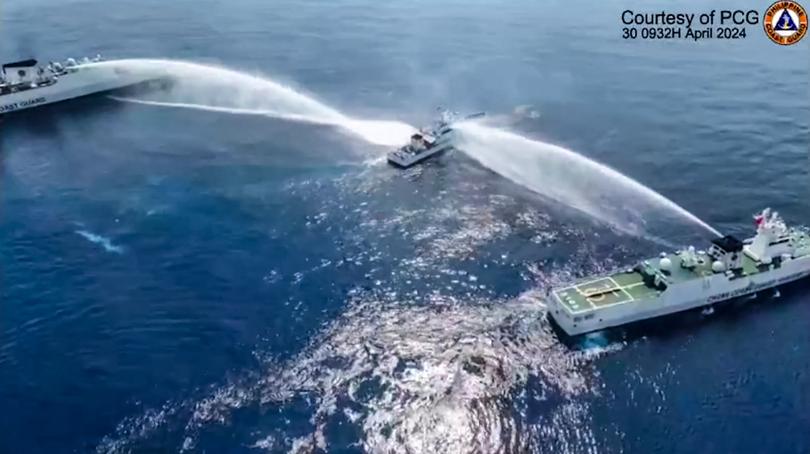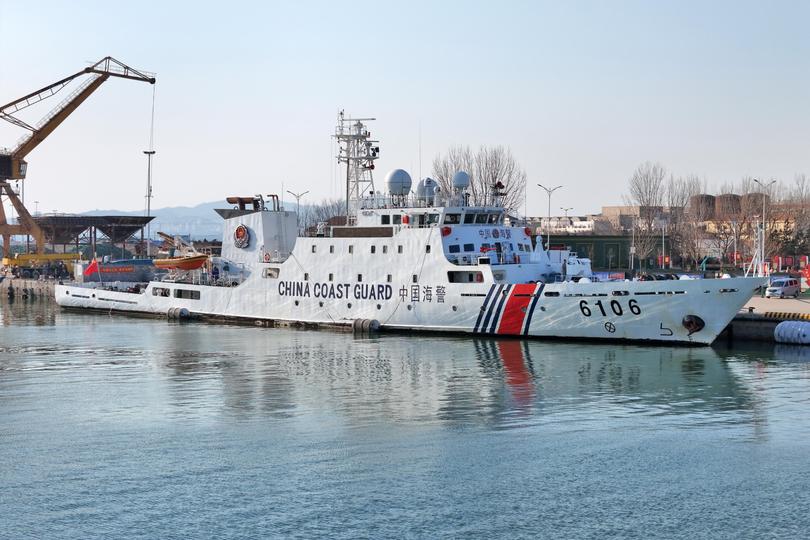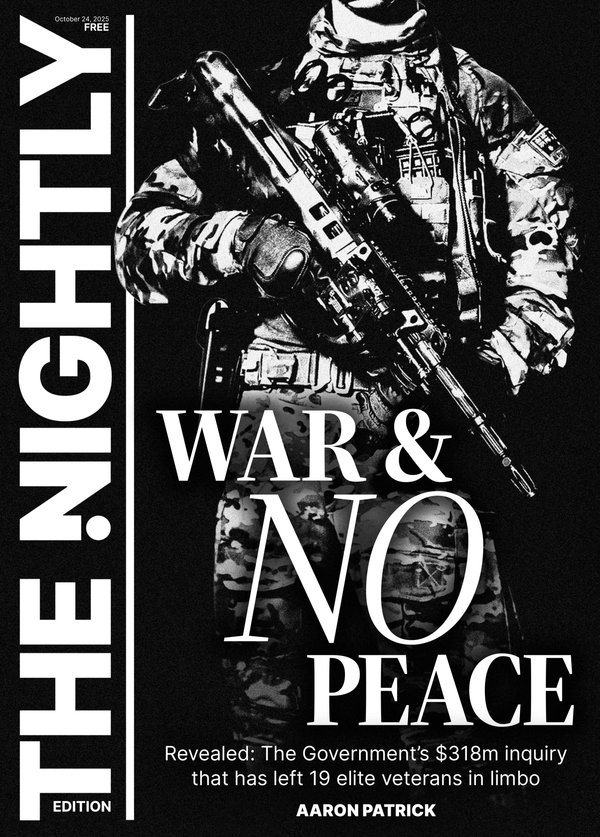NICOLA SMITH: Inside the China Coast Guard’s stealthy maritime expansion

China’s brazen encircling of Australia with a powerful naval task force has stoked public anxiety about national security, but a quiet move last year by the China Coast Guard has raised further alarm about strategic maritime vulnerabilities.
The growing influence of the China Coast Guard, now the largest in the world, has also resurrected the question of whether Australia should be investing in the creation of its own coastguard to address evolving global threats.
Diplomats and security analysts are closely monitoring the impact of a decision last year by the Western and Central Pacific Fisheries Commission to register 26 CCG vessels to allow them to legally board foreign fishing vessels in critical and disputed waters.
Sign up to The Nightly's newsletters.
Get the first look at the digital newspaper, curated daily stories and breaking headlines delivered to your inbox.
By continuing you agree to our Terms and Privacy Policy.The intergovernmental WCPFC, of which Australia is also a member, oversees conservation of fishstocks in an area covering almost 20 per cent of the Earth’s surface.
This includes the so-called first, second and third island chains that stretch from Japan and Taiwan through the contested waters of the South China Sea and as far eastwards as the Pacific islands stretching from Hawaii down to Tonga.
The island chains are integral to the Indo-Pacific security doctrines of the United States and its allies, including Australia, and to slowing China’s efforts to exert control over the area’s rich resources and patchwork of vital trade routes.
Analysts warn the new, unprecedented powers afforded to CCG ships by the WCPFC could be exploited by Beijing to expand its military ambitions and that countries like Australia should be concerned.

They point to a body of documented evidence that the formidable China Coast Guard operates like no other coastguard in the world.
The centrepiece of its fleet is the 165m-long CCG-5901, which is three times the size of the US Coast Guard’s main patrol vessels and dubbed “The Monster”.
The Monster operates with 163 other cutters as the maritime arm of China’s People’s Armed Police, which is under the command of the Central Military Commission.
The fleet is built to People’s Liberation Army Navy (PLAN) specification and operates under the PLAN during wartime, and this differentiates it from other coastguards normally assigned to law enforcement and search-and-rescue operations.
In recent years, it has been central to Beijing’s “grey zone strategy”, alongside the Navy and Chinese fishing vessels as a so-called “maritime militia” to intimidate and squeeze out rival South-East Asian nations to disputed waters, shoals and reefs.
China Coast Guard ships have increasingly pushed Beijing’s territorial claims in the South China Sea and been involved in multiple clashes over the past year that have damaged Philippine ships and injured crew with high-powered water cannons.
“The Coast Guard is already used as something of a paramilitary force, as opposed to a traditional coastguard,” explained Ray Powell, who served as a US defence attache in Canberra between 2017 and 2020.
“It does things that other coastguards simply don’t do. It has ships of sizes that no other coastguard has. It’s used to do things like assert China’s jurisdiction over waters far from Chinese shores,” said Mr Powell, who is now director of SeaLight at the Gordian Knot Centre for National Security Innovation at Stanford University.

This made the WCPFC authorisation “more concerning” as “China has a motivation to abuse this kind of recognition in order to bolster its claims”, he argued.
“The first concern is the legitimising of China’s outrageous coastguard activities already,” he told The Nightly.
“What you could look at in the future is the China Coast Guard operating off of other countries shores, conducting boardings or detentions or those kinds of things, and using this authority as a cover,” Mr Powell added.
“The way that China uses the grey zone — a sort of murky place between peace and war and legal and illegal, is it conducts minor aggressions or even sometimes major aggressions, and then tries to normalise those activities.”
The recent mission by three self-sustaining Chinese warships — including a Renhai-class cruiser capable of carrying hypersonic missiles — that conducted live-fire drills near Australian waters, exposed gaps in the country’s maritime capabilities.
The flotilla was expected to complete its circumnavigation of Australia’s coastline on Friday, with its last known location now 777km off the remote territory of Christmas Island. Mr Powell said the rise of China’s Coast Guard should also prompt introspection about whether Australia’s maritime force writ large was “appropriate for a maritime nation” whose “primary threats are via the sea”. Australia should be resourcing a navy and a coastguard to ensure a “sufficient maritime constabulary and military that suits its size and situation”, he said.
It’s a question that has also been raised by former naval officer and maritime security expert Jennifer Parker who argued in a paper for the Australian Naval Institute in November that Australia needed its own coastguard to deal with modern-day maritime threats.
“In some ways, we need to take a leaf out of China’s book and understand the influence a coastguard can have internationally,” she said.
But Australia also had to “think about our own layered maritime defence and the fact that it is not in our interest to be using our small navy to be conducting constabulary functions, when actually they need to be preparing for high-end conflict”, she added.
In the event of such a crisis, Australia’s exclusive economic zone would be flooded with illegal fishing and irregular migration and “we would not be prepared to deal with that because we don’t have the structures in place, and we don’t have a coastguard”, Ms Parker said.
“It seems like a really easy structural win and yes, it’s going to cost money, but certainly it will cost less to buy coastguard ships than it does billion-dollar warships to use them for illegal fishing . . . I do think we need to have the conversation.”
From a national security perspective, the country should be worried about the registry of CCG vessels at the WCPFC, the legitimacy that offered, and the prospect of Beijing getting a foothold with vessels regularly operating in the Pacific, Ms Parker said.
China’s Coast Guard vessels were seeking to normalise their presence and relationship with Pacific Islands in Australia’s backyard, in a similar fashion to Beijing signalling Chinese warships operations would become more common.
“This is all part of a broader plan of China trying to get a foothold in the Pacific and normalise operations,” Ms Parker said.
The Nightly contacted the Department of Foreign Affairs and Trade, the Defence Ministry and the WCPFC for comment.

